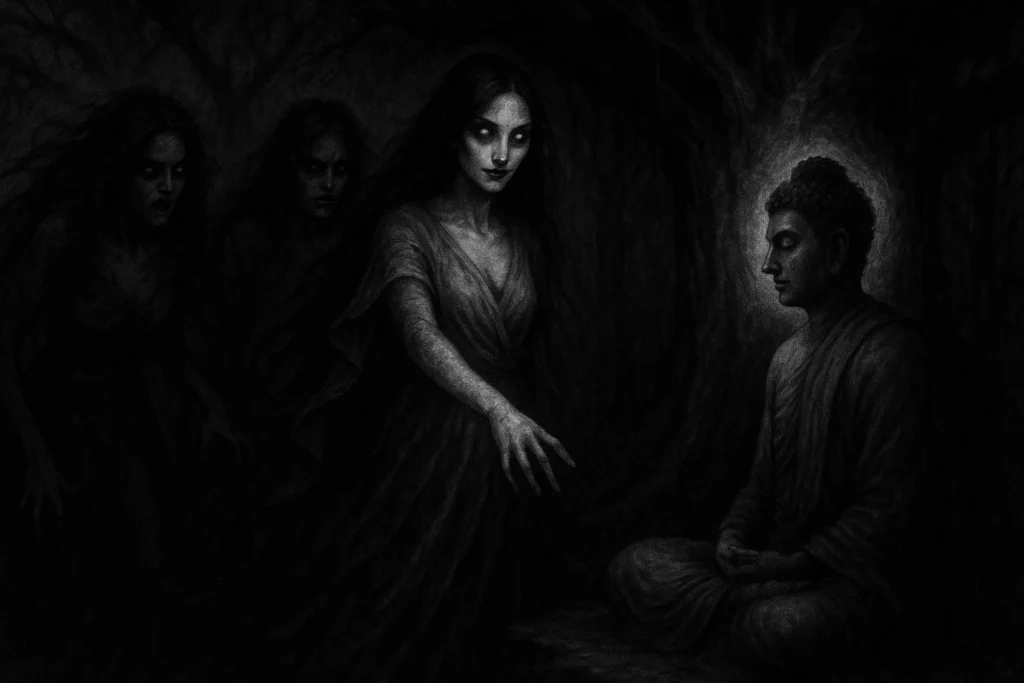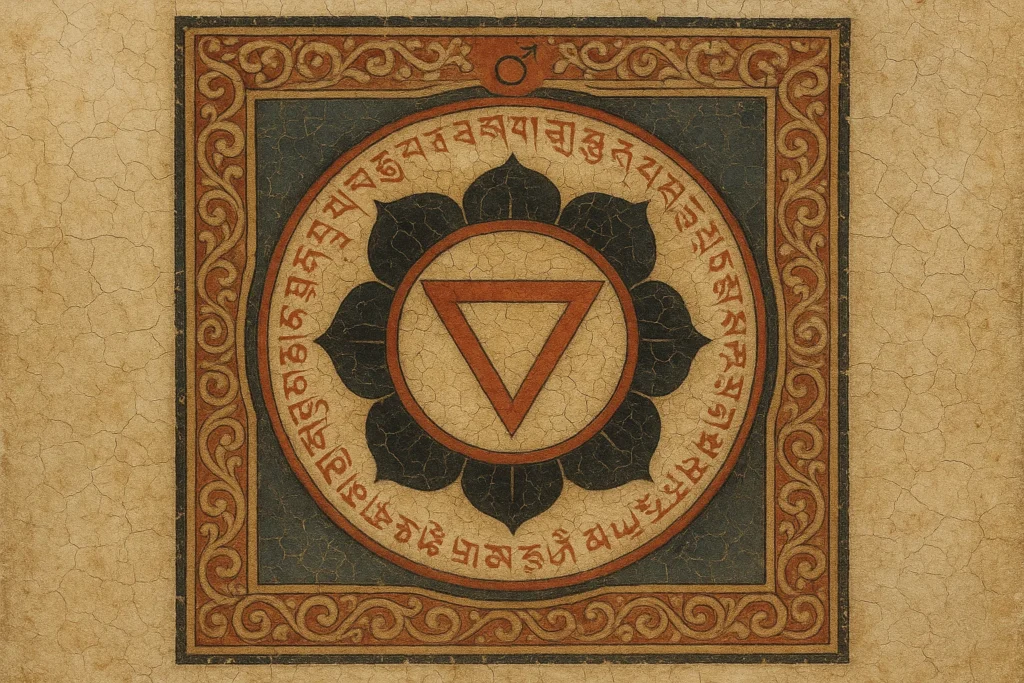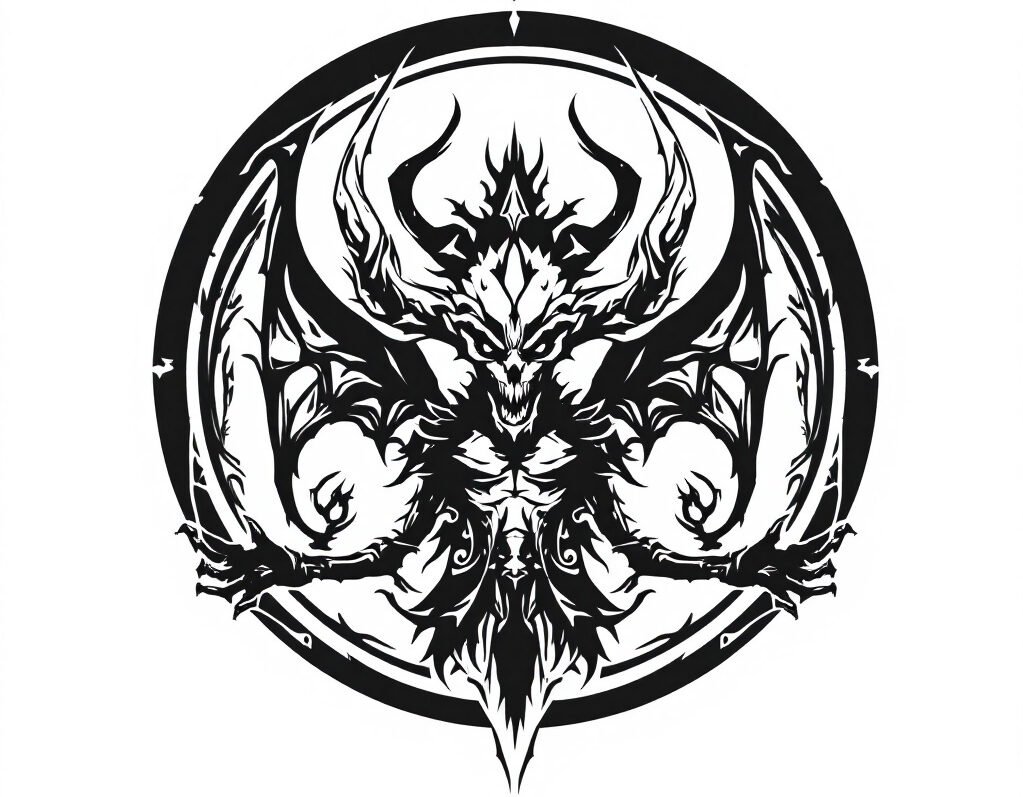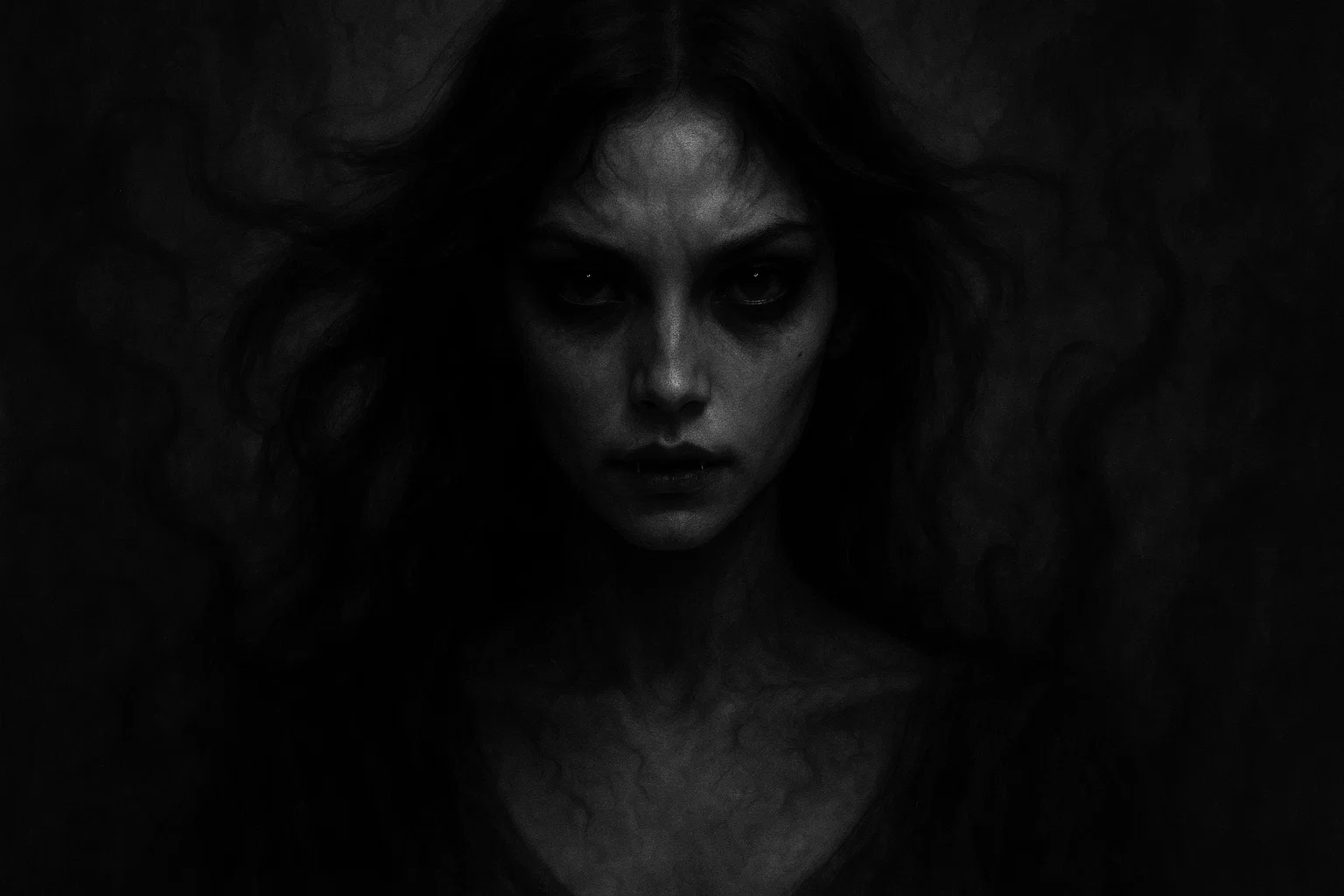Arati is one of the three daughters of Mara, the Demon King of obstacles to spiritual growth. She represents aversion or discontent, the feeling of unrest that pulls people away from peace.
Along with her sisters Tanha (craving) and Raga (passion), she tried to tempt the Buddha after his awakening, but failed. This event illustrates how inner struggles can block the path to insight.
In Buddhist teachings, Arati highlights the mind’s battles with negative states. Her role comes from early texts and spreads across traditions, reminding followers to face such forces with calm awareness.
Summary
Key Takeaways
| Attribute | Details |
|---|---|
| Names | Arati, Yue pei (in Chinese texts), Aversion, Discontent |
| Title | Daughter of Mara, Demon of Aversion |
| Region | India (origin), spread to Southeast Asia, Tibet, China, Japan |
| Type | Buddhist demon |
| Gender | Female |
| Realm | Desire realm (Kama-dhatu) |
| Obstacle/Threat | Aversion, discontent, unrest that distracts from the path |
| Associated Figures | Mara (father), Tanha and Raga (sisters), Buddha |
| Weapon/Item | None |
| Weaknesses | Overcome by meditation, awareness, enlightenment |
| Associated Deity/Figure | Buddha |
| Pantheon | Buddhist |
| Primary Sources | Samyutta Nikaya, Mahaprajnaparamita-sastra, Lalitavistara, Buddhacarita |
“Arati” Meaning
The name “Arati” comes from Pali and Sanskrit roots, where it means “dislike,” “aversion,” or “discontent.” It stems from “a-rati,” with “a” as a negative prefix and “rati” meaning delight or pleasure. Therefore, it means a lack of joy or unrest in the mind.
In Buddhist contexts, this aligns with her role as a force that creates inner turmoil, thereby blocking calm and focus.
Over time, the name evolved across regions. In early Indian texts (such as the Pali Canon), it’s Arati. However, as Buddhism spread to China, it became “Yue pei” in some stories, keeping the sense of aversion.
In Tibetan traditions, similar ideas appear, but the name stays close to the original. This shift demonstrates how Buddhist ideas were adapted to new languages while retaining the core meaning of emotional unrest.
In broader Asian contexts, such as Chinese Buddhist tales, the concept of aversion is closely tied to local views on inner demons. Still, the name’s root remains tied to ancient Indian words.
How to Pronounce “Arati” in English
Say “Arati” as “uh-RAH-tee.” The first sound is like “uh” in “up,” then “RAH” like “rah” in “raw,” and “tee” like “tea.” There are no significant changes in the Chinese or Korean forms, as the name remains close to the Indian original in Buddhist texts.
What Does Arati Look Like?
Arati appears as a beautiful young woman, meant to draw attention and stir unrest. Sources describe her with graceful features, soft skin, and alluring eyes that promise delight but hide her true aim—to create aversion.
She often shows up in groups with her sisters, all dressed in fine clothes, with flowing hair and gentle smiles. This look originates from texts where characters change shapes to tempt, often starting as maidens.
In different traditions, her form remains largely unchanged. In Theravada Buddhism from Southeast Asia, she’s a seductive figure in simple art, focusing on her role rather than details.
Mahayana texts (such as those found in China or Japan) may incorporate additional elements, like bright robes or jewels, but retain the beauty that conceals danger.
Vajrayana in Tibet is depicted in vivid paintings, sometimes with subtle, yet fierce traits, to reveal its demonic side.
Art from India to Tibet portrays her as tall and elegant, with a body that shifts ages—from girl to old woman—to test resolve.
You may also enjoy:
Si’la: The Seductive Jinn Who Lures Travelers to Their Doom
October 9, 2025
Palden Lhamo: The Black Goddess of Blood and Protection
October 20, 2025
Who Was Hiranyakashipu, the Demon King of Hindu Mythology?
October 6, 2025
What Is Qarin and Why Does It Follow Every Human Being?
October 8, 2025
Who Is Agaliarept, the General of Hell Under Lucifer?
October 8, 2025
Marid: The Ocean Jinn That Defies Heaven and Earth
September 30, 2025
Origins
Arati is first mentioned in early Buddhist texts from India, dating back to around the 5th century BCE.
She appears in the Pali Canon (part of the Theravada tradition) as one of Mara’s daughters. The story in the Samyutta Nikaya recounts how she, along with Tanha and Raga, attempts to sway the Buddha from his path.
As Buddhism grew, Arati’s tale spread to Mahayana texts by the 1st century CE. Works like the Lalitavistara and Buddhacarita, retelling her temptation and adding details about her charms.
In these, she’s part of Mara’s attacks under the Bodhi tree, showcasing her as a force in the realm of desire. Influences from pre-Buddhist Indian myths, where demons tempt sages, have shaped her, yet she fully aligns with Buddhist cosmology.
Over the centuries, her story spread to Tibet, China, and beyond through sutras and art.
In Vajrayana, she symbolizes inner struggles, overcome by practice. While Hindu roots affect Mara, Arati stays Buddhist-focused, with no direct ties to Hindu asuras or yokai. Her growth reflects Buddhism’s shift from simple teachings to rich narratives on the mind.
Regional Variations
Arati appears much the same across Buddhist lands, but small changes reflect local art and views.
| Region/Tradition | Appearance | Role |
|---|---|---|
| Theravada (Thailand, Sri Lanka) | Beautiful maiden, graceful, alluring eyes | Tempts with aversion to distract from meditation |
| Mahayana (China, Japan) | Elegant woman, bright robes, shifting forms | Creates discontent as part of Mara’s attacks |
| Vajrayana (Tibet) | Seductive figure, vivid colors, subtle fierce traits | Symbol of inner unrest, overcome by awareness |
Role in Buddhist Cosmology
Arati fits in the Realm of Desire, one of six realms where beings face cravings and unrest. As Mara’s daughter, she works in this space to stir hatred, keeping souls tied to cycles of birth and death.
Arati in the Pali Canon
In the Pali Canon, Arati plays a pivotal role in testing the Buddha’s resolve after his enlightenment.
| Source | Quote |
|---|---|
| Samyutta Nikaya 4.25 | Then Mara’s daughters—Taṇha, Arati, and Raga—approached the Blessed One and said to him: “We serve at your feet, ascetic.” But the Blessed One paid no attention, as he was liberated in the unsurpassable extinction of acquisitions. |
| Samyutta Nikaya 4.25 | Then Mara’s daughters—Taṇha, Arati, and Raga—went off to the side and consulted with one another: “Men have differing preferences. Suppose we each manifest the body of a hundred maidens.” So Mara’s daughters—Taṇha, Arati, and Raga—each manifested the body of a hundred maidens. They approached the Blessed One and said to him: “We serve at your feet, ascetic.” But the Blessed One paid no attention, as he was liberated in the unsurpassable extinction of acquisitions. |
| Samyutta Nikaya 4.25 | Then Mara’s daughters—Taṇha, Arati, and Raga—each manifested the body of a hundred women who had given birth once… twice… middle-aged women… old women. But the Blessed One paid no attention… |
| Samyutta Nikaya 4.25 | Then Mara’s daughters—Taṇha, Arati, and Raga—went off to the side and said: “What our father said is true: ‘The world, austerity-freed, is not easily ensnared by lust and anger. Having gone beyond Mara’s realm, it goes as it likes.’ If we had approached any contemplative or brahman like this who was not free from lust, either his heart would have burst, or he would have vomited hot blood, or he would have gone mad or dried up. He would have become like a stick left in the wake of fire.” So saying, Mara’s daughters—Taṇha, Arati, and Raga—disappeared. |
Arati in Mahayana Sutras
In Mahayana texts, Arati joins Mara’s attack on the Bodhisattva under the Bodhi tree. She uses charms to corrupt, but fails, highlighting the power of focus.
| Source | Quote |
|---|---|
| Mahaprajnaparamita-sastra | While the Buddha was under the Bodhi tree, king Māra, out of spite (daurmanasya) sent him the three princesses, Lo kien (Ragā), Yue pei (Arati) and K’o ngai (Tṛṣṇā). They came showing off their bodies and using all sorts of charms to try to corrupt the Bodhisattva, but the latter did not let himself become disturbed and did not look at them. |
| Mahaprajnaparamita-sastra | The three maidens said to themselves: “The hearts of men are all different and tastes vary: some like little girls (kumārika), others women of a ripe age (madhyastrī); some like them big, others small; some like them black, others blonde; each of these types has its lovers.” |
| Mahaprajnaparamita-sastra | Then the three maidens each changed into five beautiful women and each of these five women underwent innumerable metamorphoses (pariṇāma). They came out of the forest and appeared suddenly, like lightning from a dark cloud; they raised their eyebrows, lowered their eyelashes and, watched carefully like young married women; they made music and used all the tricks. Coming close to the Bodhisattva, they pressed their splendid bodies up against his body. |
Powers and Abilities
Arati’s power level matches that of other minor demons, like her sisters, who are below Mara but strong enough to test human minds.
She focuses on emotional pulls, less mighty than realm rulers like Yama, but key in daily struggles. Her abilities stem from creating unrest, much like the forces in the Realm of Desire.
Her power and abilities include:
- Shape-shifting: The ability to change form from a young girl to an old woman to suit one’s tastes.
- Temptation: Stirs aversion and discontent to distract from practice.
- Illusion: Creates false charms and music to lure the mind.
- Group attack: Works with sisters to boost impact through combined forces.
- Emotional control: Implied ability to heighten dislike or boredom in targets.

Arati Myths, Legends, and Stories
The main tale of Arati primarily centers on her effort to sway the Buddha, drawn from sutras.
Arati and Her Sisters Tempt the Buddha
At Savatthi, Mara’s daughters—Tanha, Arati, and Raga—came near the Blessed One and spoke to him in lines: “We stand by your side, seeker. We stand by your side, seeker.”
Yet the Blessed One gave them no notice, since he was free in the topmost end of holdings.
Then Mara’s daughters stepped aside and talked among themselves: “People have varied likes. What if we each take the shape of a hundred young ladies.”
So Mara’s daughters each took the shape of a hundred young ladies. They went to the Blessed One and said to him, “We stand by your side, seeker.”
Yet the Blessed One gave them no notice, since he was free in the topmost end of holdings.
Then Mara’s daughters stepped aside and talked: “People have varied likes. What if we each take the shape of a hundred ladies who have never given birth.”
So Mara’s daughters each took the shape of a hundred ladies who have never given birth… who have given birth once… who have given birth twice… middle-aged ladies… old ladies. Each time, they went to the Blessed One and said, “We stand by your side, seeker.” But he gave no notice.
Then Mara’s daughters stepped aside and said: “What our parent stated is correct: ‘The realm, freed by strict practice, is not simply caught by desire and rage. Having passed Mara’s area, it moves as it wishes.‘”
If we had gone to any seeker or priest like this who was not free from desire, either his core would have split, or he would have spat hot fluid, or he would have lost his mind or withered. He would have turned like a branch left after flames.
With that, Mara’s daughters vanished.
Arati vs Other Buddhist Demons
| Demon Name | Associated Obstacle/Role | Origin/Source | Key Traits/Powers |
|---|---|---|---|
| Mara | Temptation, obstacle to enlightenment | Pali Canon, Mahayana sutras | Illusion, armies, shape-shifting |
| Tanha | Craving, thirst | Pali Canon | Temptation through desire |
| Raga | Passion, attachment | Pali Canon | Seduction, emotional pull |
| Preta | Hunger, greed | Pali Canon, Jataka | Insatiable appetite, suffering forms |
| Yaksha | Protection or harm, nature spirits | Pali Canon, Mahayana | Club-wielding, shape-changing |
| Asura | Jealousy, war | Pali Canon, Mahayana | Combat skills, envy-driven |
| Pisaca | Madness, disease | Buddhist texts | Flesh-eating, illusion-creating |
| Bhuta | Ghosts, unrest | Buddhist folklore | Possession, haunting |
| Kumbhanda | Deception, guarding | Pali Canon | Pot-bellied, trickery |
| Rahu | Eclipse, obstruction | Buddhist cosmology | Swallowing sun/moon, disruption |
| Yama | Death, judgment | Pali Canon, Mahayana | Hell ruler, justice enforcement |
| Hariti | Child harm, later protector | Mahayana sutras | Motherly, conversion to good |
| Mahakala | Protection, wrath | Vajrayana texts | Fierce form, time-devouring |
| Naga | Water control, treasures | Pali Canon | Serpent body, poison or boon |

Mystical Correspondences
| Attribute | Details |
|---|---|
| Planet | Mars |
| Zodiac Sign | Scorpio |
| Element | Fire |
| Direction | South |
| Color | Red |
| Number | 4 |
| Crystal/Mineral | Onyx |
| Metal | Iron |
| Herb/Plant | Nettle |
| Animal | Scorpion |
| Trait/Role | Aversion, discontent |
Arati links to Mars, the planet of conflict and drive, which mirrors her role in stirring unrest and aversion. This cosmic tie shows how outer forces can reflect inner battles, much like Scorpio‘s intense, probing nature that digs into dislikes. From there, the fire element adds to her heated, disruptive energy, burning away calm if not faced.
In symbolic terms, south as a direction represents warmth and passion gone awry, turning to red—the color of anger and warning.
The number 4 is associated with stability and upset, as seen in Mara’s four armies.
At the same time, onyx provides grounding against such forces. Iron’s strength counters her pull, and nettle’s sting recalls aversion’s bite.
Animals like the scorpion embody her sharp, defensive traits, which tie back to her role in temptation and obstacles. These links help grasp Arati’s essence, blending cosmic, natural, and symbolic views to aid in overcoming her influence through balance.
Arati’s Symbols & Symbolism
Arati lacks unique items, but symbols are tied to her nature. In her texts, she uses music and charms, symbolizing fleeting joys that ultimately lead to discontent.
Her shifting forms symbolize the unstable mind, while aversion points to the chains that bind in the realm of desire.
In art, she appears with frowns or dark shades, showing unrest’s shadow.
You may also enjoy:
Si’la: The Seductive Jinn Who Lures Travelers to Their Doom
October 9, 2025
What Is the Abumi-guchi Yōkai and Why Does It Wait Forever?
October 22, 2025
What Is Qarin and Why Does It Follow Every Human Being?
October 8, 2025
Agubanba: The Ash-Born Demon of Japanese Folklore
October 23, 2025
Who Is Agaliarept, the General of Hell Under Lucifer?
October 8, 2025
The Ghul: The Flesh-Eating Demon of Arabian Folklore
October 1, 2025

